Cutting with Crosscut and Ripcut
You will need:
Ripcut
- Draw a line about 1” (25mm) from the edge along the length of your wood. Starting with the ripcut panel saw, use your thumb to guide the saw to the start of the cut.
- With each stroke, begin to lower the hand so you alter the angle of the cut to create a kerfed guideline for the rest of the sawcut to follow.

- If there is space, hold the end of the board with your other hand to stabilise the board and allow you to counteract the forward thrust of the saw cuts by pulling on the board towards you.
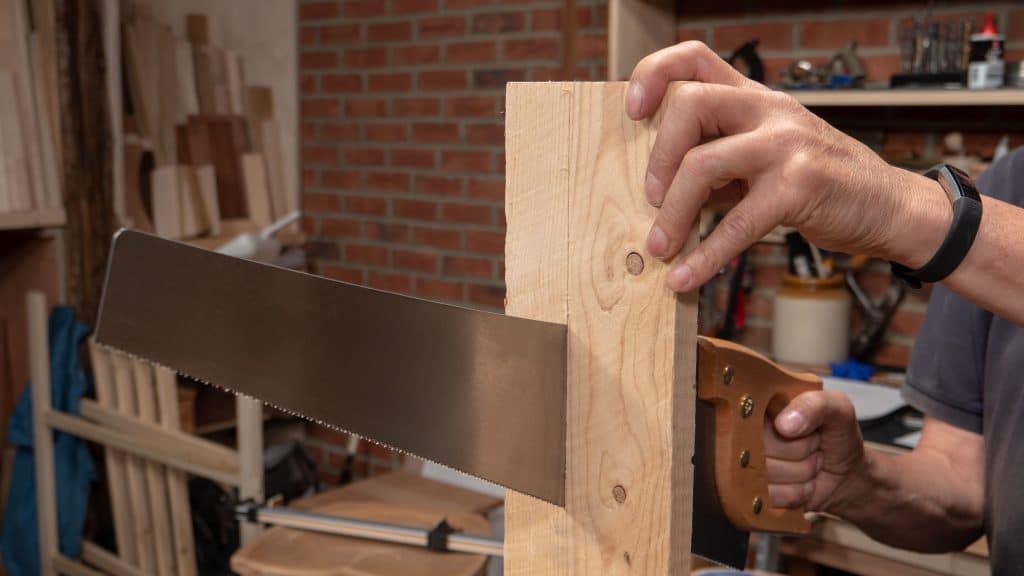
- If your piece of wood is long, angling it in the vice allows you to cut further down, with more wood being in contact with the vice which should make it more secure and easier to reach.
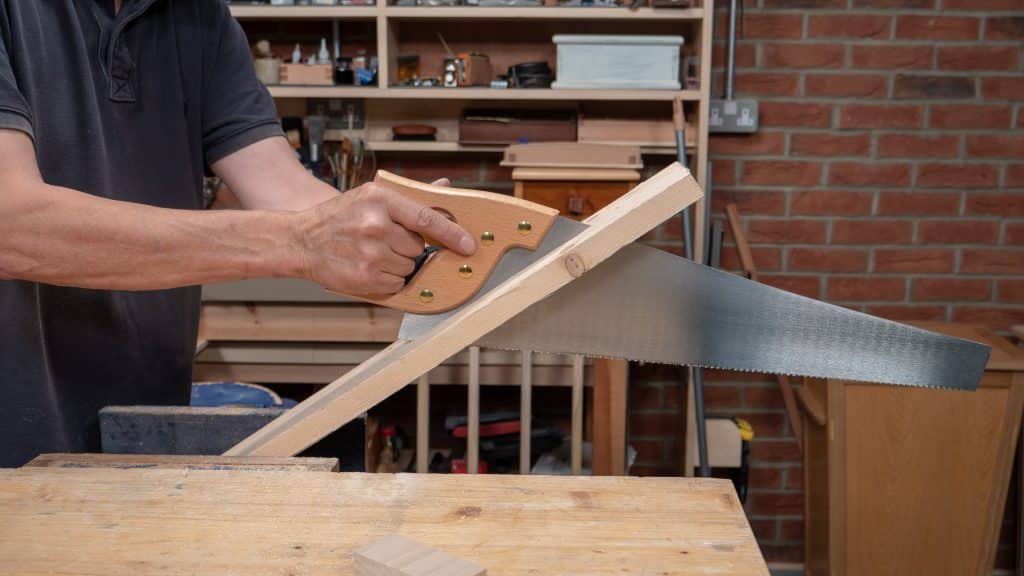
Note: Paul advises that whichever way you load the wood in the vice, you should feel the wood is secure. He often puts the wood in different directions according to the length and the width of the wood because one way may give better access over another.
Crosscut
When using a crosscut saw, you will almost always cut to a knifewall to avoid tearout (if you are doing it for rough carpentry and cutting a board down, this step isn’t necessary).
By marking a knifewall round the piece of wood, this severs the fibres which results in a cleaner cut.
When cutting across the grain, it is useful to tilt your wood in the vice to allow you to cut further without cutting into your bench.
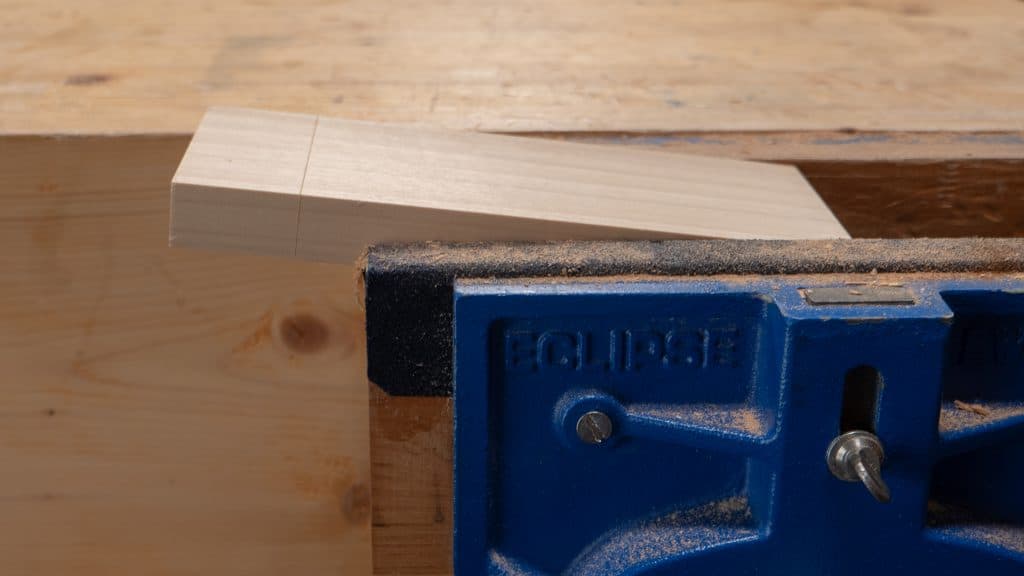
In the vice horizontally:
In the vice vertically:
If using a saw with 6 PPI or less, you would have a dedicated ripcut and crosscut saw, if your saw has 8 PPI or more, because of the smaller size of the teeth, it can both ripcut and crosscut using the same saw.

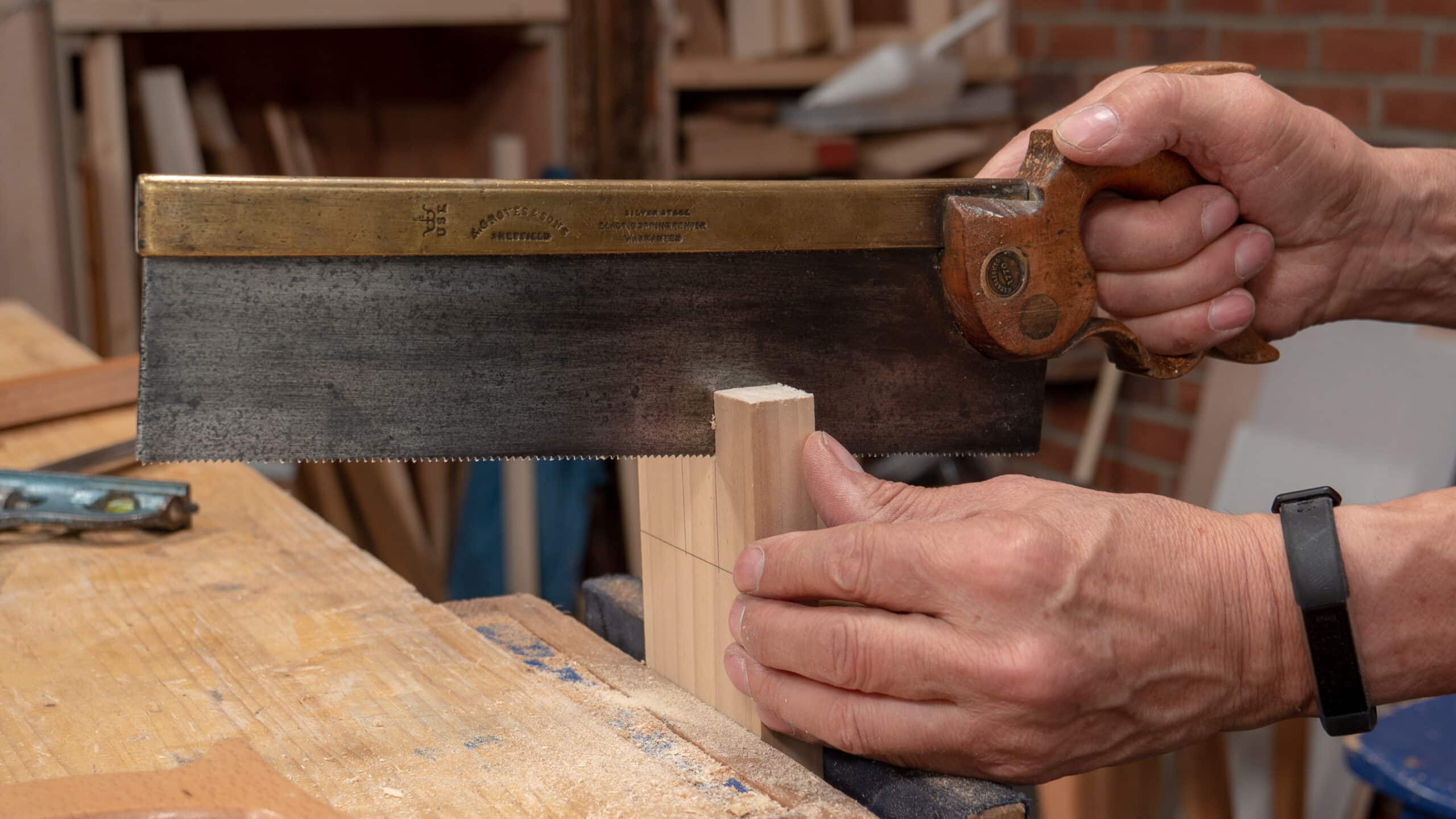

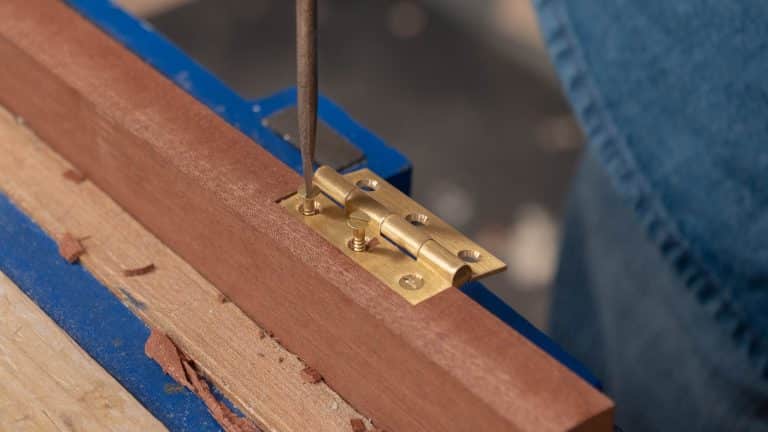
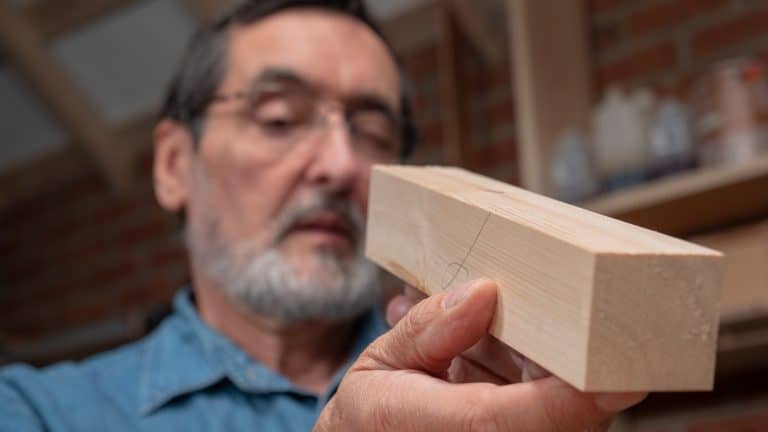
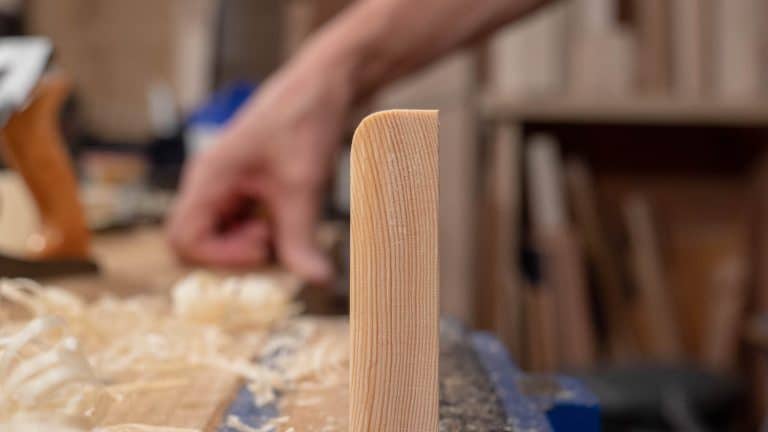


I’ve noticed that body position is important, mostly because when I lean down to check that I’m on the line the new position forces the saw off the line. Are there recommendation as to how to position one’s self?
Thanks guys
I recently bought a used Disston saw on eBay. It is rip set , about 10-11 PPI,and the teeth seem to be sharp. However, when cross cutting, there is a lot of tearing on the bottom side of the cut. I am using a knife wall. Perhaps the teeth are not as sharp as I think? Even so, it cuts so much better than the cheap hardpoint saw I have been using before.
Hi Stephen,
Paul says:
It sounds as though you have a ripcut not a crosscut saw but without seeing it I can’t tell. Most saws, 99% I would say, are sold as crosscut saws for some reason when in reality they’re more likely to be ripcut.
Kind Regards,
Izzy
Hi Jay,
You can see a video of Paul’s recommended body positions when sawing in this video.
Kind Regards,
Izzy
Re Stephen Tyrrell’s post. He already says it’s a ripcut saw in his question, doesn’t he? I would think, rather, he was wondering why, if – as Paul says – above 8ppi or so you could use either ripcut of crosscut interchangeably, his 11ppi saw isn’t performing as Paul’s blog would have him expect.